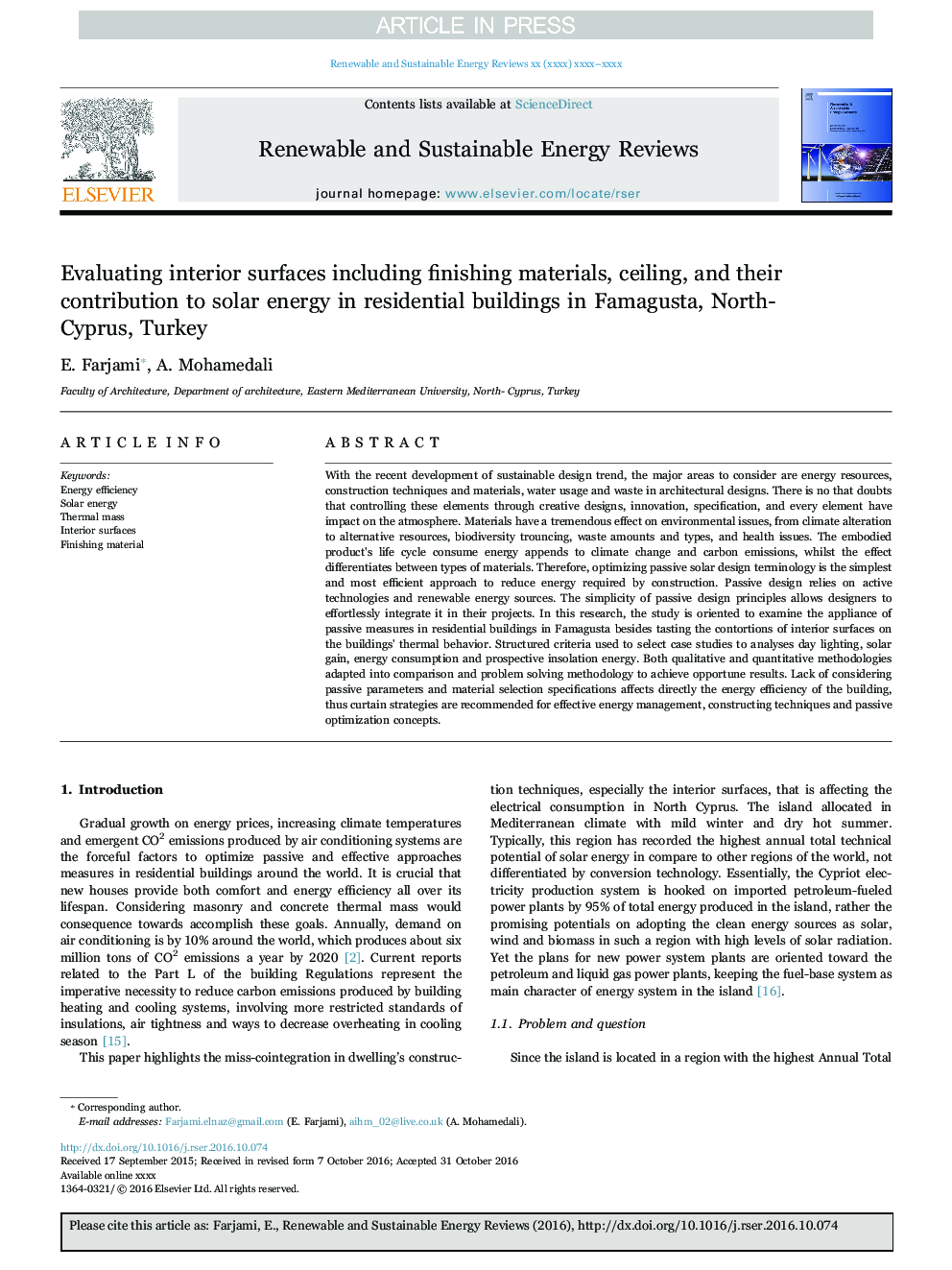| Article ID | Journal | Published Year | Pages | File Type |
|---|---|---|---|---|
| 5482843 | Renewable and Sustainable Energy Reviews | 2017 | 16 Pages |
Abstract
With the recent development of sustainable design trend, the major areas to consider are energy resources, construction techniques and materials, water usage and waste in architectural designs. There is no that doubts that controlling these elements through creative designs, innovation, specification, and every element have impact on the atmosphere. Materials have a tremendous effect on environmental issues, from climate alteration to alternative resources, biodiversity trouncing, waste amounts and types, and health issues. The embodied product's life cycle consume energy appends to climate change and carbon emissions, whilst the effect differentiates between types of materials. Therefore, optimizing passive solar design terminology is the simplest and most efficient approach to reduce energy required by construction. Passive design relies on active technologies and renewable energy sources. The simplicity of passive design principles allows designers to effortlessly integrate it in their projects. In this research, the study is oriented to examine the appliance of passive measures in residential buildings in Famagusta besides tasting the contortions of interior surfaces on the buildings' thermal behavior. Structured criteria used to select case studies to analyses day lighting, solar gain, energy consumption and prospective insolation energy. Both qualitative and quantitative methodologies adapted into comparison and problem solving methodology to achieve opportune results. Lack of considering passive parameters and material selection specifications affects directly the energy efficiency of the building, thus curtain strategies are recommended for effective energy management, constructing techniques and passive optimization concepts.
Related Topics
Physical Sciences and Engineering
Energy
Renewable Energy, Sustainability and the Environment
Authors
E. Farjami, A. Mohamedali,
